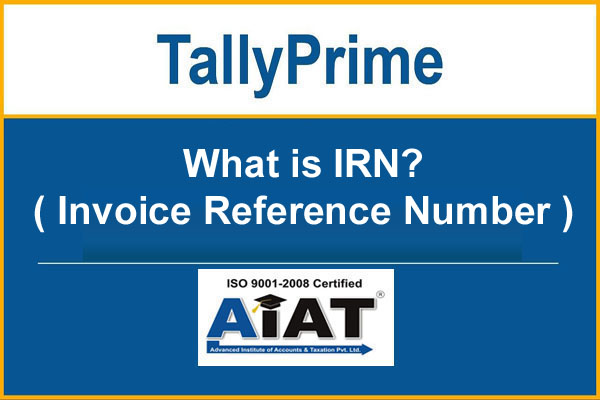
All about IRN? (Invoice Reference Number)
With the concept of e-Invoicing, an invoice is valid only if the “IRN’ and QR code is mentioned in the invoice. Invoice being an important document in business, it is of utmost necessary to understand the fundamentals of IRN and the change that may be required in the way the invoices are issued.
As per the latest update, e-invocing will be applicable for businesses with a turnover of ₹20 crores and more, from 1st April,2022.
In this article, blog we’ll discuss everything about IRN right from its meaning, format and how to generate it.
What is IRN?
IRN known as “Invoice Reference Number” is a unique invoice number generated by the Invoice Register Portal (IRP) on uploading the invoices electronically.
Under the e-invoicing system in GST, documents such as invoice, Credit Note, Debit Note or any such document as required by the law should be electronically uploaded to IRP system. Every time a unique document is uploaded in the prescribed format, a unique reference number know as 'Invoice Reference Number (IRN)' is generated by the system
IRN is also referred to as ‘Hash’ in technical terms.
Parameters and format of IRN
The IRN is computed considering the GSTIN of a generator of the document (invoice or credit note etc.), document number like invoice number and the financial year.
Supplier GSTIN,
Supplier’s invoice number
Financial year (YYYY-YY)
How to generate IRN for e-invoice?
The responsibility of generating e-invoice with IRN is with the creator of the document. To simplify, the responsibility of uploading tax invoice is with the supplier of goods or services. The IRP system, a portal designed to authenticate invoices, will accept invoices only in JSON format in a specified structure/schema.
To generate e-invoice IRN, you need to follow the steps given below:
- Generate the e-invoice data in the JSON format using their accounting software and upload it to the IRP system. You can also generate e-invoice JSON using any software utility that generates invoice including those using excel or GSTN provided offline utility.
- The IRP system will validate the invoice data and generates the IRN for the document uploaded.
- Once the e-invoice data is validated successfully, the digitally signed JSON with IRN will be sent to the supplier.
Read More : All about E-Invoicing / What is E-Invoice